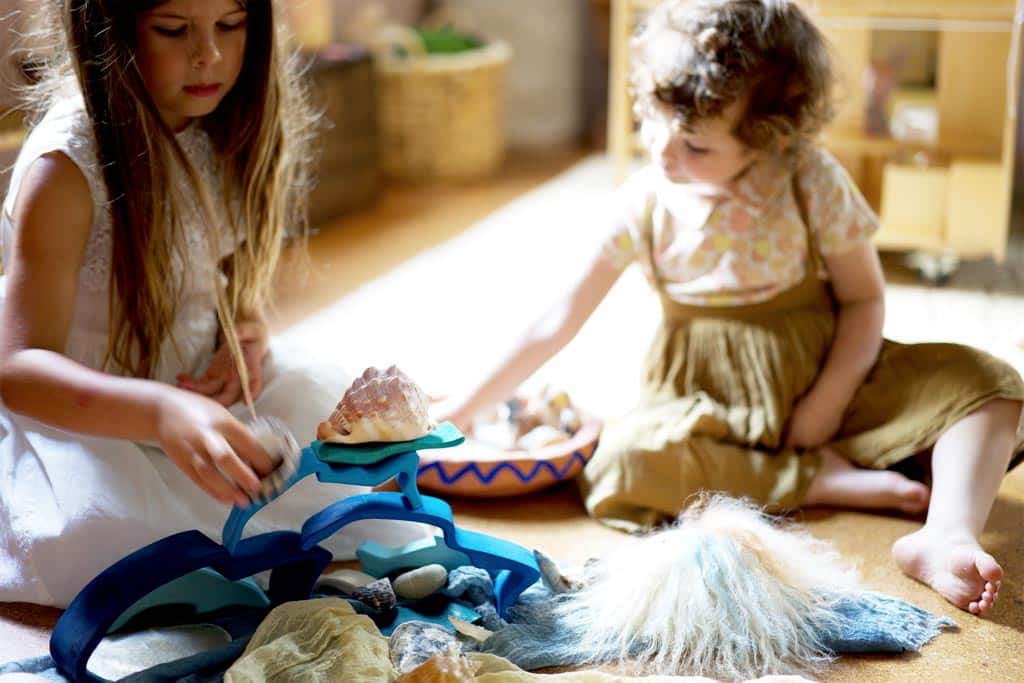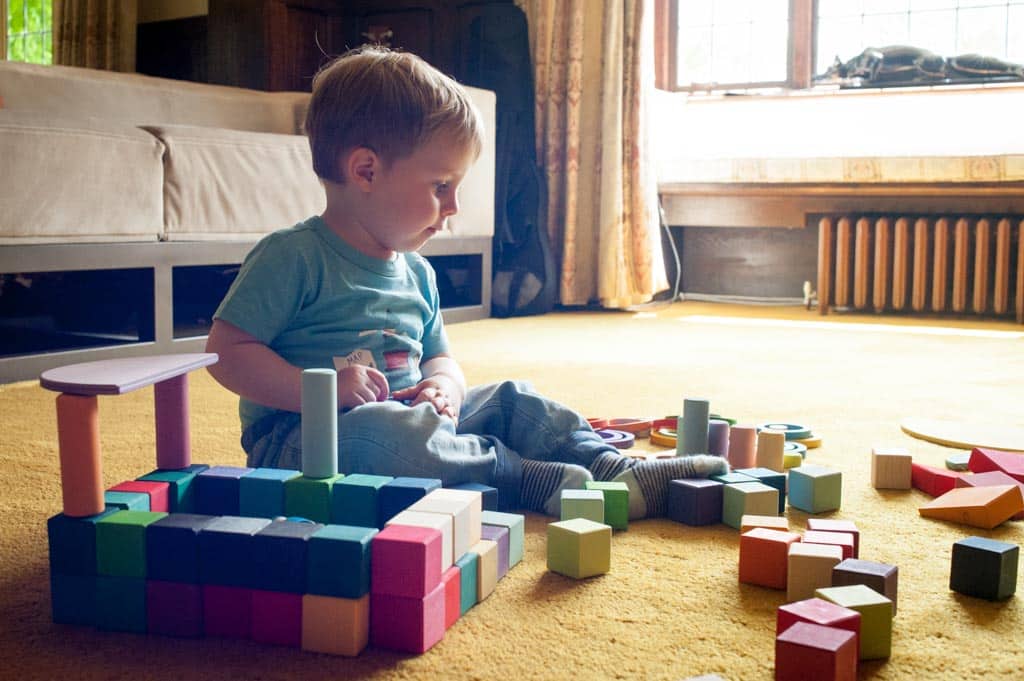How many toys does your child have?
How did they end up in your home?
Were they wanted or are they stowaways?
However many you have, I’m willing to bet you have too many.
And that’s bad. Bad because children don’t need them and because it’s impossible to store them.
Fortunately, it’s easier to cut back.
Take a look at your child’s toy collection and you’ll realised that many of the toys are essentially duplicates. Boxes full of cars, backets overflowing with dolls… Your child is delighted to receive them but the joy is shortlived. They are soon consigned to the heap of ‘old’ toys along with the others. The problem isn’t the toy – it’s that it doesn’t offer anything new.

This proliferation is more than a storage problem, though. Studies are increasingly confirming what common sense tells us anyway – too many toys can be overwhelming and actually counter-productive to play.
One recent study, conducted by researchers at Oxford University, observed 3,000 children aged three to five years old. Professor Kathy Sylva came to the conclusion that
“when there is a large number of toys there seems to be a distraction element, and when children are distracted they do not learn or play well.”

Keep it simple, the Ostheimer way.
In other words, by giving them so many options, we are putting children in a wood-for-the-trees situation, rendering them unable to engage deeply with one thing. Instead, they flit from one to another, pulling them out of boxes and throwing them aside as the next one comes into view. What parent hasn’t remarked at some point, that their children never seem to play with any of their myriad toys? Could this be the reason why?
The same study also found that children with fewer toys whose parents spent more time with them reading or singing or simply engaging with them, surpassed those with more toys in many areas of emotional and social development. So it seems the simple act of being interested, beats any toy.
And yet we continue to throw new toys over the wall into the playroom, hoping this next gift will be The One, and our quest to keep them entertained will be ended at last.
As bizarre and unsatisfactory as this situation is, it is easy to see how it happens. As families, we are all busier and more distracted than ever. In many homes, both parents are working longer hours. We are tired and stressed, and don’t always want to sing Old McDonald 20 times when we get home after a busy day.
In down time, we still have to face social media and 24 hour news, the constant ping of messages as they arrive on our tablets or smart phones. Even when we are with our children, we are distracted, not always really with them.

We have less time to spend together, especially out in nature, away from devices and distractions.
So we give them toys – and increasingly, technology and television – hoping to stave off their cries for attention a little longer. But we feel that we are somehow shortchanging them on childhood.
But then the pendulum of guilt swings the other way. We think of the helicopter parent, whose worthy omnipresence smothers their child’s independence and freedom. Is there not in fact an argument, that less time spent in play with one’s children actually fosters greater inquisitiveness and curious thinking? Shouldn’t we be teaching children to divert themselves, and not to require the attention of an adult in order to enjoy play?

Simple, unmarked cars have unlimited potential. Children are wildly imaginative and it’s not a great leap for a three year-old to pretend that a police car is actually an ice-cream van. However, if all you have are emergency vehicles, the possibilities that suggest themselves to you can only be fewer. These Grimm’s vehicles can be something different every time they come out of the toy box.
It is somewhere in this muddled mix of thoughts and feelings that, we hope, One Hundred Toys offers a solution.
While we know that nothing beats the attention of an interested adult, we also believe that the quality, and the quantity, of the toys we replace that attention with, has a far reaching impact. By offering them a smaller, more considered selection of toys that are not only appropriate for their age and the way they like to play, but that offer space for imagination and opportunities for investigation and experimentation (not simply entertainment), then we can at least feel good about the time they spend with their toys.

Instead of buying more toys, try using old ones in new ways. Take them outside, draw faces on them using chalk, make paper or felt costumes. Extending play, and extending thought, is what you are trying to achieve. And, above all, playing more creatively is more fun.
But how are parents supposed to know which toys are best? That’s where we come in, and why we created the Essential 100. It’s a list of the 100 toys, games and things to do that we believe every child should experience before they’re five. We’ve put all our years of experience as both teachers and parents behind it, to create a definitive guide to the toys and activities that will actually help and support children’s learning and development, when an interested adult can’t always step in.
Some of the things we suggest might seem a bit slow in contrast to the whizz-bang of many contemporary toys. There are lots of wooden toys on our list, and nothing that requires batteries. Many of the toys you’ll find on the high street are one-trick ponies. You can only interact with them in one way. You press the button, it makes a sound. Once the initial excitement has worn off, there is nothing to keep you coming back. Our toys are different. At first glance, many don’t seem to have much of a function at all: building blocks, play silks and make-your-own dough. This is because they ask the child to bring their own imagination and creativity to the mix. While we know it’s tempting to opt for the quick fix of the whizz-bang, we urge you to stick with us and see what happens when you ditch the bright lights and opt for fewer, better toys.

Blocks, figures and fabric. With these simple things, play is only limited by your imagination.
There’s plenty of further information and guidance on our site, but here are some tips to bear in mind for your first foray into choosing fewer, better toys. Good luck!:
- Choose open-ended toys that allow the child to assign purpose and meaning to them, not the other way around. Great starters include wooden blocks, play silks and play figures and animals.
- Have a wide range of toys, instead of a large number.
- Toys should be less about entertainment and more about engagement. Choose things to buy or do that your child hasn’t already experienced. It is new experiences that are stimulating, encourage learning and keep them interested.
- Put fewer toys out. Mess is as bad for concentration as too much choice. The best nurseries insist that children put a toy away before choosing another one.
- Consider rotating the toys you put out: construction on Mondays, doll’s house on Tuesdays, sensory play Wednesdays. This ensures you cover all bases while keeping the play fresh and stimulating.




